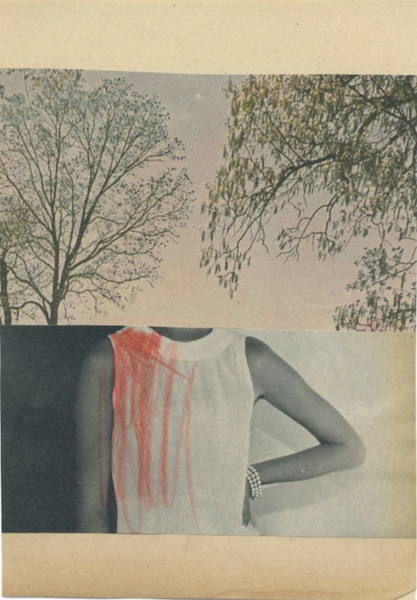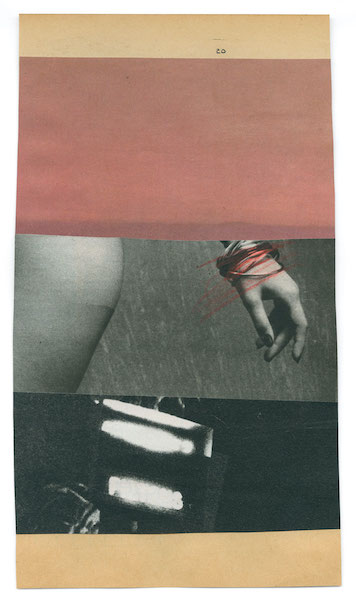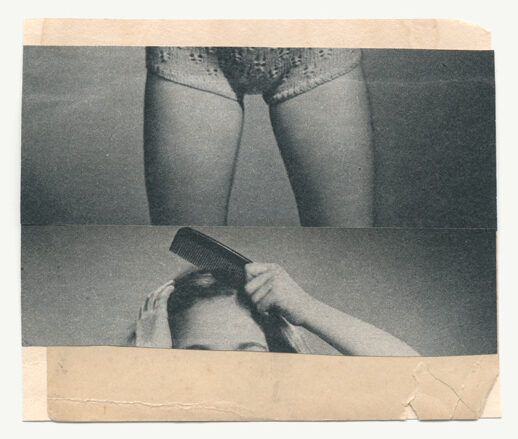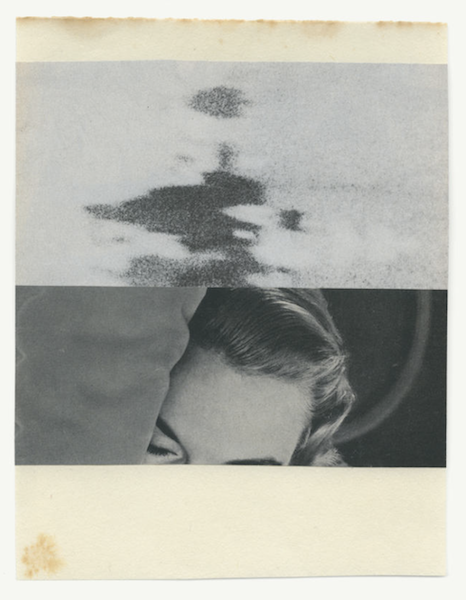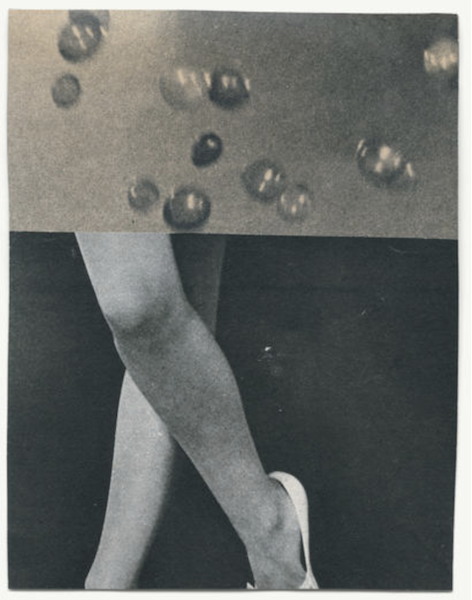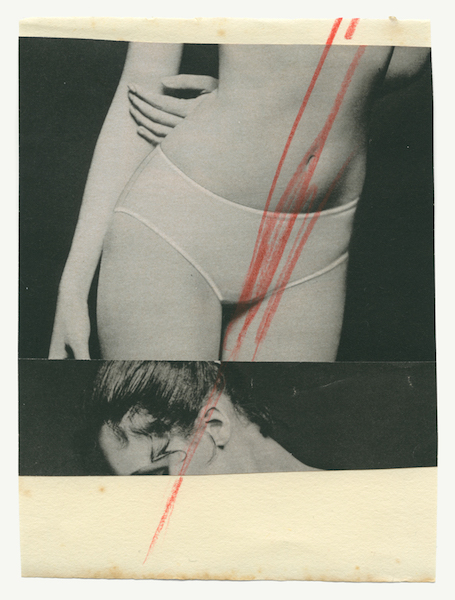
Katrien De Blauwer
He Loves Me... He Loves Me Not
02/12/2023
17/02/2024
FiFTY ONE TOO
Opening: Saturday, December 2nd from 2-6 pm, in the presence of the artist.
Gallery FIFTY ONE is delighted to announce the fourth solo exhibition of Belgian artist Katrien De Blauwer (Ronse, 1969). For ‘He Loves Me… He Loves Me Not,’ De Blauwer sought an intriguing correspondence between old and new works. The result sketches a tender portrait of the past and invites the viewer to indulge in nostalgic longing.
The extensive archive of notebooks and photomontages, created by De Blauwer since her studies at the Antwerp Fashion Academy, forms the starting point for this exhibition. These are collected image- and text fragments from vintage magazines, books, and newspapers, which, just like a photographer, she cuts and reframes into organic and random compositions. Guided by her own emotions, she intuitively glues, assembles, creases, and folds the fragments together with other visual material to create expressive and refined works. This creative cleaving into reality, supported by the resilience of chance and the power of choice, results in anonymous image fragments that are far removed from their original meaning. Like shadows of their former selves, they are universal and recognisable, yet at the same time, autobiographically charged with the emotions and memories of the artist.
The disarming playfulness of the moment, captured in images, creates an authentic ensemble where the artist engages in a dialogue with film editing. References to film noir and the way disjointed images from different contexts are brought together as a fragmented spectacle of her intimate world form a narrative whole, making her visual language distinctive and mysterious. Bathed in a nouvelle vague- like atmosphere, De Blauwer depicts a quiet universe where female protagonists shape the scenario. Their emotionality and physicality take center stage, occasionally interacting with a male character.
Read the full press release here (ENG).
Lees de volledige perstekst hier (NL).


Katrien De Blauwer
Katrien De Blauwer was born in 1969 in the small provincial town of Ronse in Belgium. After a troubled childhood, she moved to Ghent at a young age to study painting. Later De Blauwer attended the Royal Academy of Antwerp to study fashion. Although she would never finish her fashion studies, it was at that time that De Blauwer made her first collage books; studies and mood boards for fashion collections. These ‘notebooks’, as she would later call them and which she keeps to this day, are filled with sketches, image and text fragments and quotes taken from books, newspapers and magazines. They bring together various influences from literature, art, music, fashion, cinema, etc., which ultimately permeate her artistic work. After her studies, De Blauwer began collecting, cutting and recycling images as a way of therapeutic self-examination, a practice she is still developing today.
biography
Born in Ronse, Belgium in 1969
Lives and works in Ronse, Belgium
Visit artist website here.


De Blauwer collects and recycles photographs from vintage magazines and papers. She calls herself a ‘photographer without a camera’; the cut of her scissors being comparable to clicking the shutter release, with which she determines what remains visible from the original image and what not. She cuts out vital pieces of information essential to understanding the initial context of the image, such as faces and gazes, or interrupts characters in their movements, creating tension and mystery. In this so-called post-photographic process she then glues, assembles, wrinkles, folds and tears the found imagery, merges one or more separate images and combines them with mute colour strips and monochrome pieces of paper the artist collects from old books. Lately she also started to draw and paint on her works, often in a deliberately naive manner.
De Blauwer has a very spontaneous and intuitive working process, in which she mainly lets herself be guided by her own emotions. Although she uses found materials and turns it into anonymous and universally recognizable images that are far removed from their original meaning, her work is at the same time always partly autobiographical. She reassembles and appropriates the imagery into a new narrative that depicts her personal life story and memories. Still, however intimate her photomontages may be, everyone can relate to them. She thus gives new life to what is residual, saving it from destruction and granting it a new life and meaning by including it in a personal and at the same time universal story.
The way in which multiple image fragments from different contexts are brought together in a narrative whole, also renders De Blauwer’s work very cinematic. References to film are always present in her oeuvre. Not only because of the film noir and nouvelle vague-like atmosphere that permeates her work – with constant references to films of great directors as Antonioni and Godard – but also because of the way in which the ‘cut’ determines what is left visible of a certain scene. With this technique – similar to that of the photomontage or film editing – the artist creates a kind of off-screen event, which was removed from the frame but is still tangible, bringing about an alienating sense of emptiness and separation. It makes De Blauwer a master in composition and suspense. Her works often read like film scripts, a narrative line which is continued in the layout of her exhibitions, in which she carefully uses the sequencing of her works to tell a broader story to the viewer.
It’s a story is populated by almost exclusively female protagonists. With their bare shoulders, elegant hands and silent lips, De Blauwer’s women possess a great beauty and sensuality. They often experience intense emotions; they long, yearn, are afraid or lonely. The emphasis on the emotional world of her feminine characters, adds to the fragile and intimate nature of De Blauwer’s body of work. It’s a red line that runs through her oeuvre, across her different themes and series. However, her visual language continues to evolve. Although she is known for her purified compositions, in which she works towards emptiness and abstraction even, lately she allows more visual information to accumulate within one frame.















